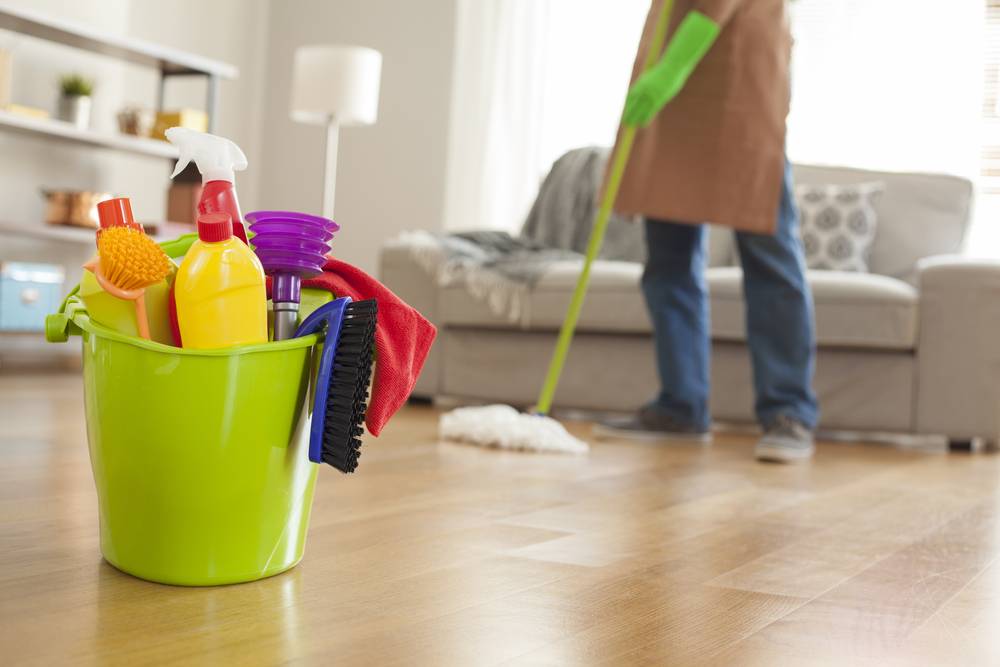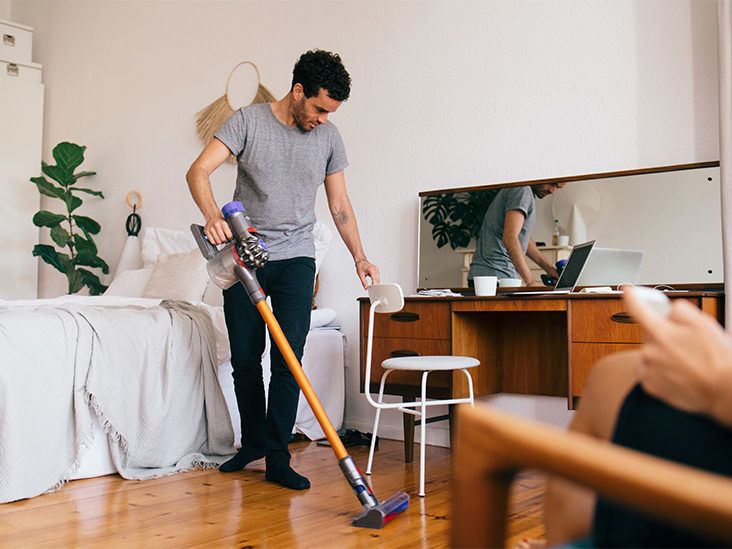Accomplish a Cleaner Home with These Everyday Cleaning Tips: Defrosted and Cleaned Every Few Months and Even more
Understanding the Demand for Extensively Disinfecting and Disinfecting Regularly Touched Surface Areas in High-Traffic Locations
In the realm of public health and wellness and security, the thorough sanitation and sanitization of regularly touched surfaces in high-traffic locations stand as critical procedures in protecting against the spread of unsafe microorganisms. The value of this method prolongs far past plain tidiness, delving into the realm of illness prevention and area well-being. By checking out the different aspects of surface sanitation, from the threats related to neglecting cleaning methods to the effective methods that can be utilized, a clearer understanding arises of the vital duty these techniques play in securing public health. As we browse this discussion, it becomes noticeable that the implications of detailed surface area disinfection reverberate not only within the confines of a particular setting but also resonate on a broader range, impacting the health and wellness of individuals throughout varied public setups.
Significance of Surface Sanitation
Stressing the thorough sanitation of high-traffic surface areas is vital in preserving a sanitary setting and avoiding the spread of harmful pathogens. High-touch surfaces such as door takes care of, light switches, elevator buttons, and countertops offer as breeding premises for viruses and microorganisms. Regular sanitation of these surfaces is imperative to reduce the threat of contamination and transmission of ailments.
By implementing a robust disinfection procedure, institutions and organizations can develop a safer environment for site visitors, clients, and staff members. Correct surface area sanitation not only alleviates the spread of contagious diseases yet likewise imparts self-confidence in the sanitation and security of the facilities. This aggressive technique demonstrates a commitment to health and health, which is particularly crucial in high-traffic locations where the chance of direct exposure to microorganisms is heightened.
Moreover, surface area sanitation plays a crucial duty in general infection control approaches. Integrated with hand hygiene methods, using masks, and keeping physical distancing, comprehensive sanitation of high-touch surface areas develops an extensive defense against the transmission of harmful microorganisms. Prioritizing surface area disinfection is an essential part of an alternative method to wellness and security in shared rooms.
Dangers of Neglecting Cleaning Practices
Ignoring extensive sanitation of high-traffic surfaces significantly increases the risk of microbial and viral contamination, positioning a major risk to the health and wellness of people frequenting these areas. Failure to execute correct cleansing practices can result in the buildup and spread of damaging microorganisms, including infections and microorganisms, on often touched surface areas such as doorknobs, hand rails, lift switches, and countertops.

Additionally, ignoring the significance of comprehensive cleansing not only compromises the well-being of individuals but additionally undermines initiatives to preserve a hygienic and tidy atmosphere. Continue It is important to recognize the relevance of proper sanitation procedures in avoiding the spread of infections and guarding public health.
Reliable Disinfection Approaches
To preserve optimum cleanliness and reduce the risk of contamination on high-traffic surfaces, utilizing reliable disinfection methods is vital. One of the most typical and effective disinfection methods is using chemical disinfectants.
Another reliable approach is the use of UV-C light. UV-C light has actually been shown to be effective in killing a broad range of bacteria by disrupting their DNA structure, thus preventing them from replicating. However, it is necessary to use UV-C light properly, guaranteeing that the correct intensity and direct exposure time are related to accomplish the wanted sanitation outcomes.
In addition, employing steam cleansing as a sanitation technique can be extremely efficient, especially on surface areas that are heat-resistant. Steam can pass through porous surface areas and kill microorganisms, viruses, and various other pathogens properly. When utilizing vapor cleaning, it is vital to make sure that the surface area reaches the called for temperature for an adequate quantity of time to guarantee correct disinfection.
Effect On Public Health
The maintenance of high standards of tidiness and disinfection on high-traffic surfaces plays a vital duty in guarding public wellness. Regularly touched surface areas in locations with high tramp, such as doorknobs, hand rails, lift switches, and bathroom centers, offer as reproducing premises for unsafe virus.
In high-traffic areas like airport terminals, institutions, healthcare facilities, and public transport systems, the effect of rigorous sanitation procedures can not be understated. Focusing on the sanitization of frequently touched surface areas is a positive approach to advertising public health and improving the safety of people in shared areas.
Executing Normal Cleaning Methods
Quickly setting up and adhering to a constant schedule of cleaning methods is vital for maintaining the tidiness and safety and security of high-traffic surfaces. Normal cleaning procedures are vital in preventing the accumulation of click reference bacteria and pathogens on frequently touched surfaces, especially in locations with high foot web traffic. By implementing an organized technique to cleaning, companies can effectively lower the risk of illness transmission and create a healthier environment for employees, clients, and the public.
To develop an efficient cleansing timetable, discover this info here it is essential to identify high-traffic areas that require constant interest. These areas may include doorknobs, hand rails, lift switches, restroom centers, and common tools. Implementing a routine cleaning program that targets these surface areas several times a day can dramatically reduce the spread of hazardous microorganisms and viruses.
Moreover, using ideal cleaner and anti-bacterials is key to ensuring that surfaces are thoroughly sanitized. Regular training of cleaning team on correct cleansing strategies and the relevance of adherence to the cleansing timetable is likewise vital in maintaining a hygienic environment. By focusing on constant cleansing procedures, organizations can promote the wellness and health of people that connect with these high-traffic surface areas.

Final Thought
Finally, it is essential to prioritize extensive sanitation and sanitization of frequently touched surfaces in high-traffic locations to stop the spread of hazardous microorganisms and preserve public wellness. Neglecting proper cleansing techniques can raise the threat of contamination and transmission of conditions. By implementing regular cleansing methods and making use of reliable disinfection approaches, we can create a safer environment for everyone (defrosted and cleaned every few months). It is critical to acknowledge the relevance of preserving clean surface areas in high-traffic locations to guarantee the wellness of the community.
In the realm of public wellness and security, the meticulous sanitation and sanitization of regularly touched surfaces in high-traffic locations stand as critical actions in stopping the spread of hazardous pathogens. By discovering the various elements of surface disinfection, from the threats connected with neglecting cleansing protocols to the efficient approaches that can be utilized, a more clear understanding arises of the important role these practices play in securing public health and wellness.Additionally, using steam cleansing as a sanitation method can be extremely effective, specifically on surfaces that are heat-resistant. When utilizing vapor cleansing, it is essential to ensure that the surface area gets to the required temperature for an adequate quantity of time to guarantee appropriate sanitation.
In conclusion, it is vital to focus on comprehensive sanitation and sanitization of frequently touched surface areas in high-traffic areas to avoid the spread of unsafe pathogens and maintain public wellness.